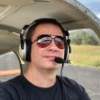reasonable M20J speeds
-
Members Online
- Bob B
- GMBrown
- TCC
- Aviationist
- McMooney
- M20F
- nite_fr8ter
- EricJ
- TNIndy
- 1980Mooney
- KLRDMD
- Mooney-Shiner
- eman1200
- jamesm
- Greg Ellis
- ThespinDotor
- Wildhorsetrail
- jetdriven
- redbaron1982
- Nova_flyer
- whiskytango
- Larry
- patrickf
- ResumeNormalSpeed83
- Rsmithref
- John Mininger
- Flyler
- taneks
- NickG
- Hank
- rwiseman
- Aggie Aviator
- MikeOH
- Jose Jo


Recommended Posts
Join the conversation
You can post now and register later. If you have an account, sign in now to post with your account.